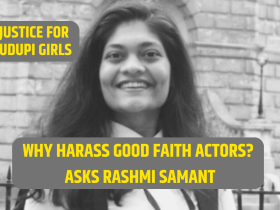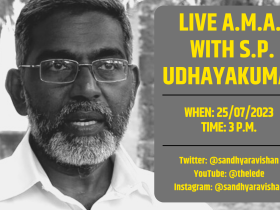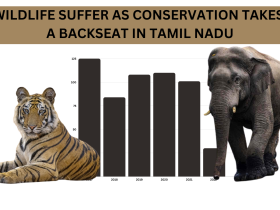By Sandhya Sridhar
In the land that we grew up in, every living thing is connected; important and relevant in our lives. Listening to stories that seem entertaining or mythological, but actually speak between the lines, handed down in the retelling from one generation to next, it is no wonder that wherever you go, there are more stories and more relevance.
In dry and fairly arid Karaikudi, are the nine temples of the Nagarathar families. These temples are beautifully maintained and uphold the spiritual traditions in many ways, from the sthala purana or the genesis story of the temple, to every little thing surrounding the deity and his/her significance.
Our story is about the Bhairavar or Vairavar temple, about two kilometres from Pillayarpatti, both about 13 kilometres from Karaikudi proper. Now Bhairavar, as those who know our history know, is a manifestation of Lord Shiva. He is depicted with a dog, and is seen as a guardian deity.

Vairavanpatti is the name of this village, and the temple is called the Vairavan Swamy temple. Calm and serene, with a temple tank, the Vairavar Theertham right in front, as you enter, you glimpse the shrine of Valar Oli Nathar, in the main shrine. The goddess here is Vadivudai Ammai. There is a large shrine to Vairavar, who looks majestic, the dog hugging his feet, and lovingly looking up at him. Vairavar, says the local who has accompanied us on the visit, is one of the Ashta Bhairavars, one of the eight temples dedicated to Lord Bhairavar.
The walls of the temple are full of stories, with episodes from the Ramayana and Mahabharata. There is a Nandi in all his grand splendour, looking at his Lord, as is his wont in all the Shiva temples.
The local who takes us around, the temple, shows us a carving of a tree stump in one of the mandapams, reverentially placed as in a sanctum. “This is a representation of the sthala vriksham, the Alinji tree,” he tells us. He then leads us outside, to the side of the temple, through a mandapam that has been built for homas and other functions. He points to two trees that have been carefully fenced off.

We go nearer, and he points to the trunks. “Do you see?” he asks. We look closely and we see something strange. The seeds of the trees are stuck to the trunks.
“The seeds,” he tells us, “When they fall down, jump back and stick to the trunks.”
He tells us that sthala vriksham, or the tree that defines and marks this particular temple, is important, for it, like the Bhairavar who protects, keeps you free of negative energy from enemies.
“Whatever you throw at the world,” he says, “will come back to you, whoever it is.” He adds, “Even us, what we do comes back to us.”

The Bhairavar here, was asked by Lord Shiva, to cut off Lord Brahma’s fifth head. The fifth head represents Ego. This story goes thus: Lord Brahma had five heads, as did Lord Shiva. Brahma was very proud of this. One day, the Goddess Parvati worshipped Brahma, mistaking him to be her Lord. Lord Brahma knew that she had mistaken him for Shiva, but did not tell her this. Once Parvati realised the truth, she told Lord Shiva what had happened. He asked Bhairavar to cut off Lord Brahma’s fifth head, so that he would not be so proud anymore.
Lord Bhairavar, or Vairavar, thus assumes great significance in this temple, blessing those who come to him with protection from adversities and from enemies.

Sometimes, pride and ego can be an individual’s worst enemies. While for an individual, prayer, our deities and temple-going can mean many things, a tree tells a very simple story: karma is of our own making—what goes around, comes around.
Photographs: Sandhya Sridhar













Leave a Reply